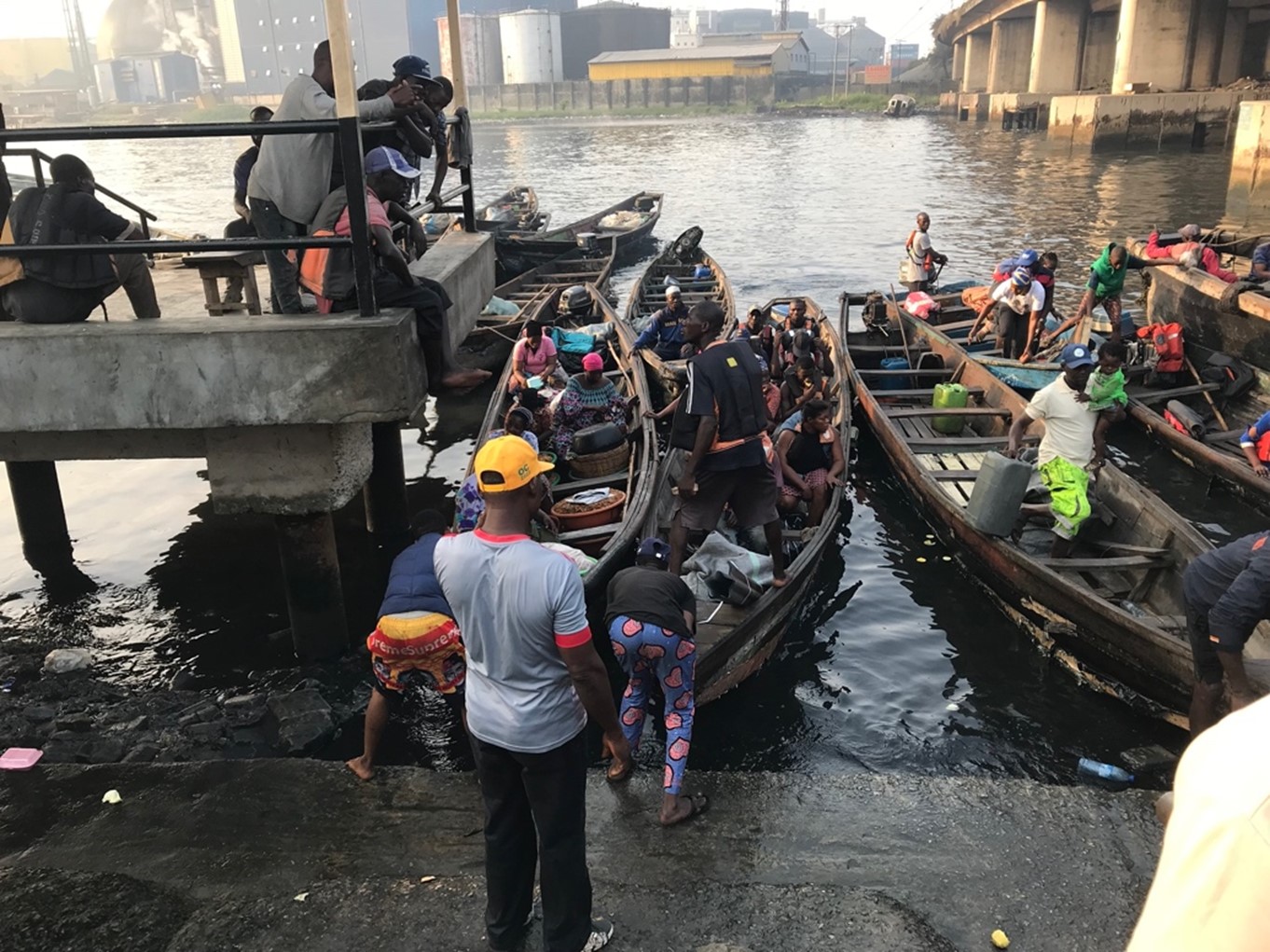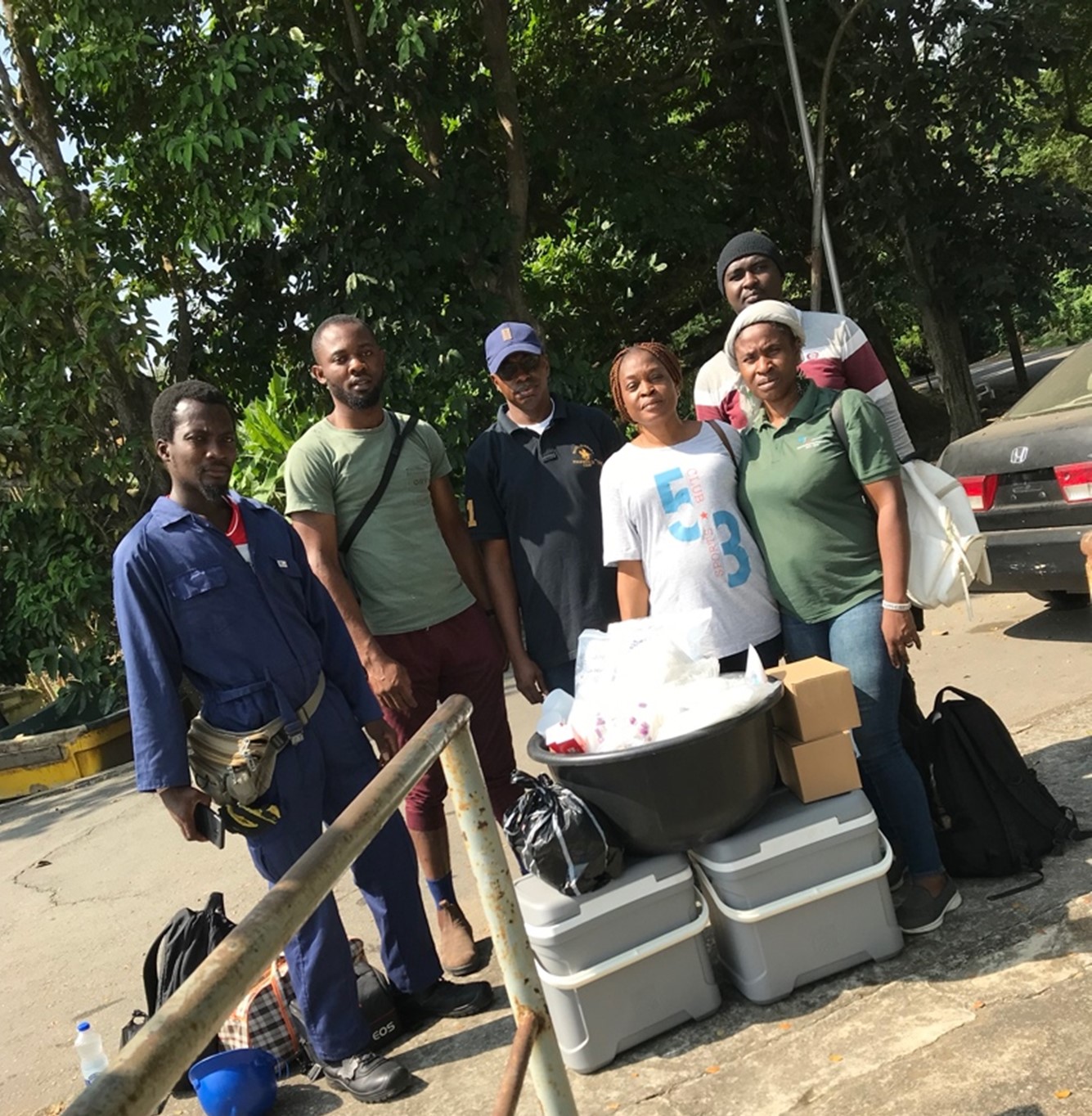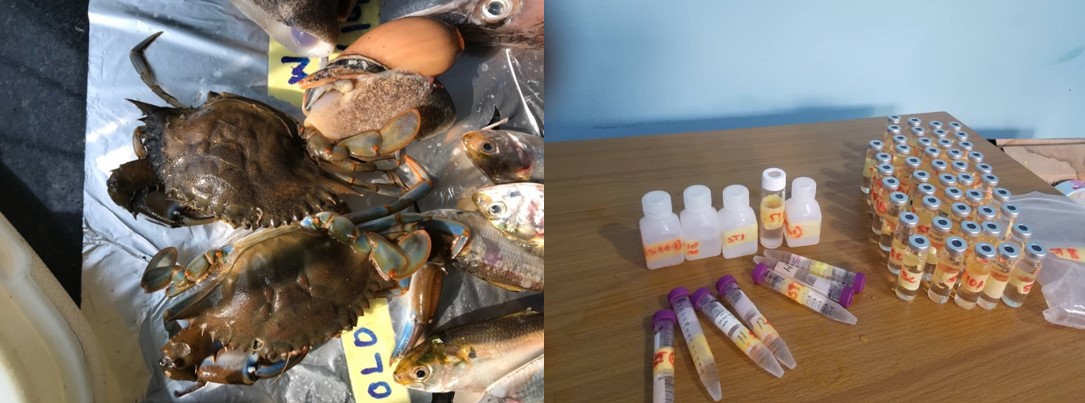News
» Go to news mainField Report: Exploratory Study of nitrogen cycling at the Lagoon Lagos

Date: December 19, 2022 – January 3, 2023
Location: Lagos Lagoon, Nigeria
CERC.OCEAN master’s student, Chukwuka Orji, initiated an exploratory study into the cycling of nitrogen in the Lagos Lagoon, Nigeria, which took place in several phases between December 2022 – January 2023 as part of his master’s research. The study is a co-operation between CERC.OCEAN lab, Dr. Owen Sherwood’s lab (Department of Earth and Environmental Sciences, Dalhousie University) and collaborators from the Nigerian Institute for Oceanography and Marine Research (NIOMR), the University of Lagos (UNILAG) and the Eco Restoration Foundation, a Nigerian NGO.
The Lagoon
Lagos Lagoon is one of the largest and most important lagoons in the Gulf of Guinea with an area of 6400 km2. It provides transportation, recreation, food, and employment services to the city of Lagos, one of the most densely populated and rapidly growing cities in the world with approximate 22 million inhabitants and a projected population of over 40 million by 2050. Lagos lagoon is brackish water, fed by the Ogun and Oshun rivers which drain a land area of 66000 km2. As population increases, more waste enters the lagoon from agricultural, industrial, and human sources. As a result, the health of the lagoon ecosystem and its services to the people of Lagos are seriously compromised. Despite this, the lagoon lacks an organized monitoring program for determining and addressing the state of pollution. Increased inputs of nitrogen, leading to eutrophication, remains the greatest threat.

Figure 1: The people of Lagos plying their trades on the Lagoon.
This study was motivated by Chukwuka’s intrinsic passion for using science to solve real world problems, coupled with his belief in the value of cooperation in ocean-related technical training, research, and knowledge exchange between West African nations and Canada. The study is promoted by Development of Ocean Technical Capacity with African Nations (DOTCAN, Fonseca-Batista et al., 2022), a not-for-profit organization based in Halifax, Nova Scotia, where he provides part-time assistance in addition to his research. The project team includes Dr. Doug Wallace, Dr. Owen Sherwood, Dr. Juliet Igbo from NIOMR, and Dr. Abayomi Akeem at UNILAG.
Our study was initiated last December with a cross-Atlantic mission to collect samples which will form the basis of my thesis. Sampling equipment was shipped from Halifax to Lagos in mid-December, while we finalized the details of the field work. The main goals were:
- To collect water, sediment, macroalgae and biota samples to analyze the levels of nitrogen-15 isotope in order to gather baseline information on the state of eutrophication in the Lagos Lagoon.
- To strengthen relationships with global partners in ocean research namely NIOMR and UNILAG.
The Crew

Figure 2: (Left to Right) Sewanu Faton, Chukwuka Orji, Dr. Abayomi Akeem, Dr. Juliet Igbo, Dr. Justina Obienu and Rotimi Oyebisi
Dr. Juliet Igbo (NIOMR) and Dr. Abayomi Akeem (UNILAG) were the Chief Scientists for the mission. The rest of the team was comprised of five researchers - Dr. Justina Obienu (NIOMR), Mrs. Ezekiel Martha (NIOMR), Sewanu Faton (UNILAG), Rotimi Oyebisi (PhD. Student, UNILAG) and myself. The team assembled and prepared the sampling instruments at NIOMR and then proceeded to the Lagos University Lagoon station where the sampling journey commenced.
The Research
The primary aim is to establish a baseline pollution level in the lagoon. This is necessary to develop a management plan and coordinated monitoring program. The presence of 15N stable isotope is a reliable indicator to trace the levels of pollution in the water and biota of the lagoon.
Ten stations were sampled which ensured adequate representation of geographical coverage of the lagoon. Water, sediment, macroalgae and biota (fish, crab, shrimp, and snails) were collected and processed at NIOMR and UNILAG. Over sixty samples were collected for the following analyses:
- Nitrogen-15 stable isotope (δ15N)
- Carbon-13 stable isotope (δ13C)
- Nutrients
- Nitrous Oxide (N2O)

Figure 3: Samples from the Lagos Lagoon
There were many challenges encountered during the research mission, but the team’s commitment to advancing research was steadfast and the trip was a huge success. There was a lively exchange of scientific and cultural knowledge during the process, and we look forward to working with the NIOMR and UNILAG team in the future.
Reference
Fonseca-Batista, Debany et al. 2022. “Collaborative Enhancement of Canadian and West African Partner Countries’ Technical Capacity for a Safe, Secure, and Sustainable Blue Economy.” Journal of Ocean Technology 17(4): 15–27.
Recent News
- Recap of ASITA 2024 Conference
- ASITA 2024 Conference
- Happy World Ocean Day! + CMOS congress 2023 recap
- Upcoming presentations by CERC.OCEAN lab at the CMOS 57th congress
- UPDATED: List of Instrumentation and Analytical Services
- Field Report: Exploratory Study of nitrogen cycling at the Lagoon Lagos
- Marine Robots – Back in Action at OHMSETT
- Spotlight of the month: Adriana Reitano

